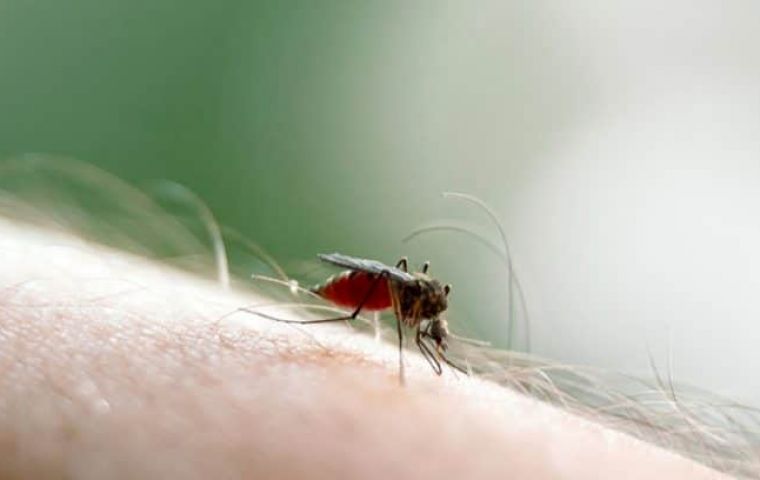MercoPress. South Atlantic News Agency
Latin America on alert over oropuche spread
 Before the July 25, 2024, report from Brazilian authorities, there was no record of oropouche being deadly
Before the July 25, 2024, report from Brazilian authorities, there was no record of oropouche being deadly With two confirmed deaths caused by oropouche, health authorities in Brazil, Cuba and Colombia are concerned about the recent outbreak of the malady in the region. Other countries do not even keep track of the number of patients who might have contracted the disease and are therefore doing little to nothing to prevent it from spreading, not even after the Pan American Health Organization's (PAHO) alert last month.
According to PAHO data, cases of oropouche virus (OROV) were on the rise in Bolivia, Peru, Cuba, Colombia and Brazil. In the latter alone, 7,767 cases have been confirmed this year, including two women, aged 21 and 24, who died of the virus despite having no comorbidities. Testing for oropouche has increased since 2023 among people with symptoms similar to those of dengue, zika or chikungunya, particularly in the Amazon region.
In Santiago de Cuba, cases have increased “considerably” since the first positive resullts on May 27, it was reported. Since then, the total number of cases has crossed the 400 threshold nationwide in a “complex” scenario which also includes influenza and dengue while fumigation is next to impossible given the fuel shortage and rainy weather.
In Colombia, where oropouche is endemic, at least 87 cases have been confirmed according to the National Health Institute (INS). The country is on active alert, INS Director Giovanny Rubiano García explained.
Argentina, Mexico and Uruguay have so far reported no infections, although preventive measures were upped. Mexican authorities also issued a travel alert for its nationals willing to visist Bolivia, Brazil, Colombia, Cuba, and Peru, descrbing the risk as “medium,” despite which people were advised to remain vigilant for symptoms and seek medical help up to 12 days after returning. Unlike Mexico, for PAHO, the level of risk in the region is “high.”
The zoonotic disease was first detected in 1955 near the Oropouche River in Trinidad and Tobago. It spreads through bites of mosquitoes from the Culicoide paraensis variation, and also vertically: from mothers to their unborn fetuses. These cases may result in deaths or microcephaly in newborns. Symptoms include the sudden onset of fever, headache, joint stiffness, aches and pains and, in some cases, photophobia, diplopia (double vision), nausea and persistent vomiting. There is no vaccine or specific treatment for the infection. Painkillers may be used to reduce fever and relieve some symptoms. Hospitalization may be required.
Before the July 25, 2024, report from Brazilian authorities, there was no record of oropouche being deadly.




Top Comments
Disclaimer & comment rulesCommenting for this story is now closed.
If you have a Facebook account, become a fan and comment on our Facebook Page!